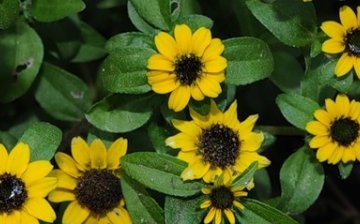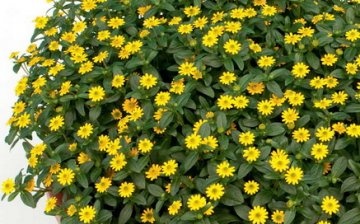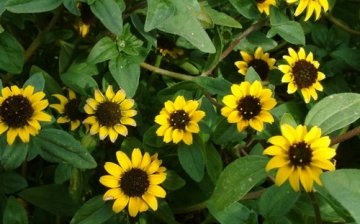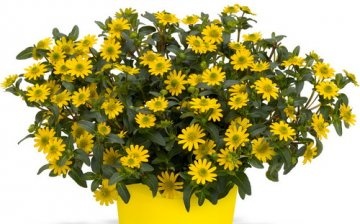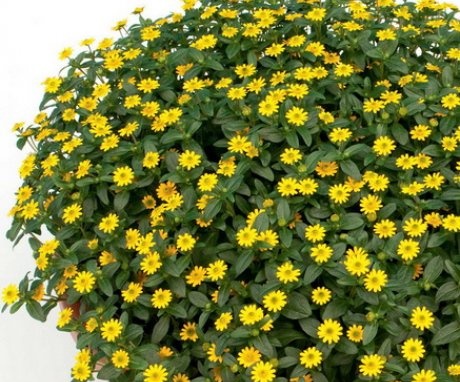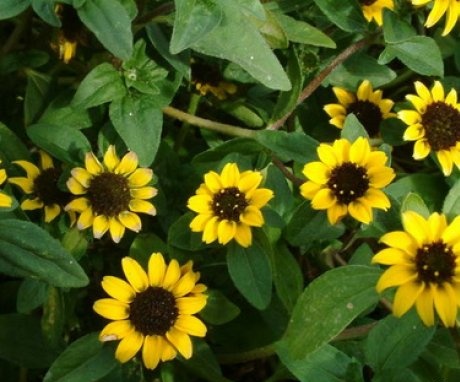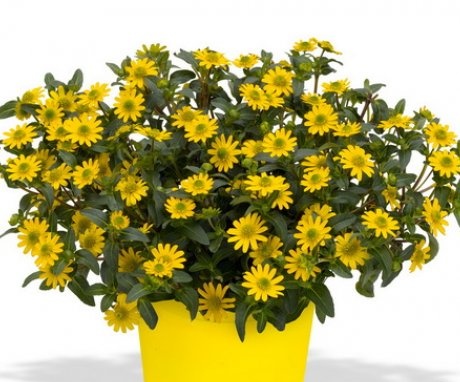Cultivation of sanitation
Sanvitalia is a low-growing herbaceous annual or perennial plant with highly branched creeping stems. Sanvitalia has opposite leaves, ovoid or elongated. The inflorescences of the sanvitalia are in the form of a basket with white, yellow, orange ligulate flowers and tubular black-purple flowers. The diameter is up to 2.5 centimeters.
Content:
- Decorative properties of sanitation
- Cultivation of sanitation
- The main principles in the care of sanitation
Sanvitalia bloom lasts from July to October. The plant forms broad bushes, flowering is very abundant. Sanvitalia's fruit is achene. The seeds ripen well and are harvested.
Decorative properties of sanitation
The cultivation of sanitation is carried out for the purpose of decorating flower beds, flower beds, hanging baskets, containers, balconies. The sanitation looks very nice when decorating borders, when creating rock gardens or near large stones. The plant grows quickly enough and can acquire various beautiful forms.
As for other plants that look beautiful together with sanitation, these include nasturtium, sweet pea, salvia, cineraria, forget-me-nots, Iberis bitter, pinnate carnation... In general, many flowering plants with contrasting colors will go well with sanitation.
In gardening, common sanitation is often used. It is an annual plant with outstretched and widely growing thin and strong stems, which blooms profusely from July to frost. The inflorescences are numerous and very showy.
Cultivation of sanitation
The cultivation of sanvitalia is carried out with the help of seeds. Seeds are sown in March or April in a warm greenhouse, where the temperature will be maintained at approximately + 18-20 degrees. The seeds are sown in a box with loose and fertile soil and lightly sprinkled with earth. Watering is best from the bottom, making a special container under the box. When the seedlings are strong, they can be transplanted into pots. An important procedure is the hardening of the seedlings.
Seedlings are transplanted into open ground in May. By this time, the threat of possible frost should be over. The distance between plants should be about 20 centimeters. Sanvitalia blooms two months after sowing the seeds.
Sowing sanitation in open ground can be done both in May and June. After the formation of the bushes, it is important to thin them out and make a distance of 20 cm from each other.
The main principles in the care of sanitation
- Location and soil
Sanvitalia prefers sunny, open areas with moderately fertile and well-drained soil. When planting a plant in a container, a substrate is prepared consisting of clay soil and sand (ratio 3 to 1). The soil around the sanitary facility must be weeded and loosened periodically. Weeds are also important to remove in time.
- Moisture and watering
The plant is unpretentious to moisture, it blooms well both in dry and damp summers. Sanvitalia is wind resistant and drought tolerant. Therefore, there is no need for abundant watering. While the plant is young, watering should be quite economical. In the future, it can be made a little more intense. But not watering the plant for too long is still dangerous.
- Fertilizers
Sanvitalia can be fed with liquid fertilizers. It is enough to do this procedure once every two weeks.Especially sanitary will need feeding after planting the plant in open ground and during the period of bud formation. A full range of mineral fertilizers will do.
- Temperature
Sanvitalia loves warmth. If the air temperature does not drop below +5 degrees, you can count on abundant and long flowering. Frosts for the plant are allowed only within -3 degrees. But if possible, it is better to transplant the plant into a warm room.
- Transfer
This procedure does not harm the plant at all. It can be carried out even during the flowering period, especially if the root system is closed.
- Possible diseases
If the foliage begins to curl and change color, you can judge the lack of moisture. If this happens, then you need to water the flower abundantly. If the sanitation is growing in a hanging pot, then you can also put it in a bucket of water for an hour. Then take it out and let the water drain.
If the leg of the plant darkens, then this condition is detrimental to the flower. To prevent this problem, it is important to maintain good air circulation for the seedlings. You also don't need to sow the seeds too thickly. As already mentioned, the seedlings should be watered from below into the tray. You can put a box with seedlings for 15 minutes on a pallet, which will be filled with warm water.
As the experience of many gardeners shows, the cultivation of sanitation is not particularly difficult. Therefore, this beautiful plant can be a worthy decoration for your site, home or balcony. Such a bright and sunny plant will always cheer you up, even if the weather is cloudy or rainy.



